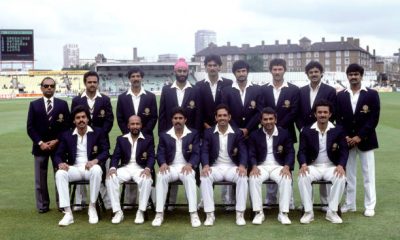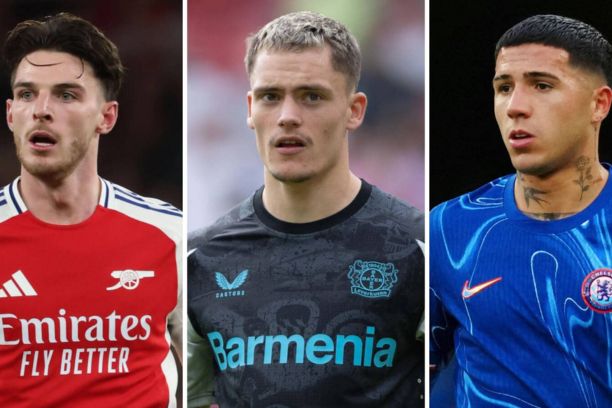
The Premier League transfers have become a show of wealth. Big fees, high wages, bidding wars noticed all over the world, this is football at its most riches.
The Premier League Football isn’t just the most-watched league, it is the richest. High TV deals, global fanbases, and billionaire owners means clubs can spend large sums for assembling teams designed to win at all costs. These aren’t just signings. They’re intentional statements, exercises ambition and calculated risks that can transform clubs or drown them in regret.
11 Most Expensive Premier League Transfers Ever
1. Florian Wirtz – £116 million (Liverpool from Bayer Leverkusen, 2025)
2. Moisés Caicedo – £115 million (Chelsea from Brighton, 2023)
3. Enzo Fernández – £106.8 million (Chelsea from Benfica, 2023)
4. Declan Rice – £105 million (Arsenal from West Ham, 2023)
5. Jack Grealish – £100 million (Manchester City from Aston Villa, 2021)
6. Romelu Lukaku – £97.5 million (Chelsea from Inter, 2021)
7. Paul Pogba – £89.3 Million (Manchester United from Juventus, 2016)
8. Mykhailo Mudryk – £88.5 Million (Chelsea from Shakhtar Donetsk, 2023)
9. Darwin Nunez – £85 Million (Liverpool from Benfica, 2022)
10. Antony – £82 Million (Manchester United from Ajax, 2022)
11. Harry Maguire – £80 Million (Manchester United from Leicester City, 2019)
How Transfer Fees Shape Modern Football
There was a time when £10 million could buy you a top player. Those days are long gone. The premier league football has transformed into a financial power. With global TV audiences numbering in the billions and sponsorship deals with the biggest brands on earth, clubs can now pay fees once unimaginable.
Premier League transfers are not just about filling gaps in a team. They are strategic moves designed to shift power, energize fanbases, and make headlines. Clubs use record signings to send intentional statements to rivals and to attract more fans, sponsors, and even other players.
Premier league football clubs have outspent nearly all rivals in other leagues, which transformed the competition. While clubs like Real Madrid and PSG still make big moves, the Premier League’s middle-tier teams now outbid Europe’s giants for top talent.
What Makes a Transfer So Expensive?
Fans often shake their heads at the sums involved. But premier league transfers fees have some reasons for being so high.
Player Quality and Market Demand
Clubs are willing to pay a lot for proven quality especially for players with unique attributes that can win titles. But scarcity also makes prices high. A world-class striker or creative midfielder is a rare commodity.
Club Rivalries and Bidding Wars
Competition between buyers can send premier league transfers fees up. When multiple wealthy clubs pursue the same player, negotiations quickly lead into auctions. This is particularly true in England, where the top six clubs often vie for the same targets.
Commercial Value and Branding
Signing a superstar isn’t just about goals and assists. Players with massive social media followings and global appeal sell shirts and expand a club’s brand worldwide.
Evolution of Record Premier League Transfers
In the early premier league football era, £10 million seemed too big. Alan Shearer’s £15 million move to Newcastle in 1996 was jaw-dropping at the time. But TV deals and global popularity changed everything.
By the 2010s, £50 million was common. Now, £100 million deals are no longer shocking, they’re expected for the best players. Jack Grealish’s move to Manchester City in 2021 officially broke the £100 million mark for the first time in English premier league football history. It won’t be the last.
Here’s the list of the 10 most expensive premier league transfers, the reason behind them, and how they’ve shaped the clubs involved.
11. Harry Maguire – £80 Million (Manchester United from Leicester City, 2019)

Image Credit: Goal
Manchester United needed a defensive leader. Leicester City played hardball, knowing United’s desperation. This resulted in a record for premier league transfers fee for a defender at the time.
Maguire brought dominance and leadership, initially stabilizing United’s backline. But he also became open to criticism. Errors were ruthlessly highlighted. His lack of pace was mercilessly used against him. Social media turned his name into a punchline for laughter. Yet beneath the ridicule lies a reminder of the weight of expectation that high record fees bring.
10. Antony – £82 Million (Manchester United from Ajax, 2022)
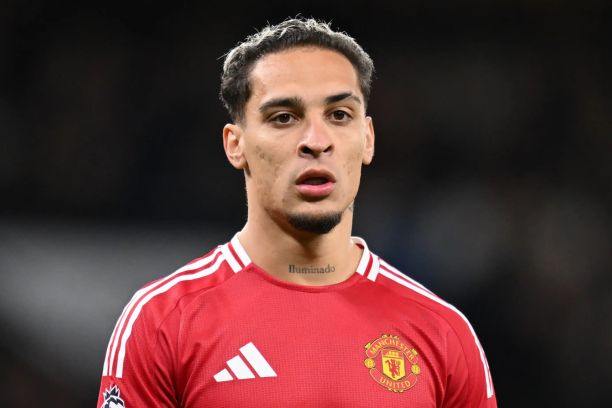
Image Credit: Goal
Desperation can be expensive. Manchester United’s season of 2022 saw them searching for attacking reinforcements. Erik ten Hag turned to a familiar face in Antony, the Brazilian winger he had coached at Ajax.
Manchester United agree to a fee that shocked many.
Antony brought skills, tricks, audacious finishes and the confidence to try anything. But critics accused him of one-footedness and style over substance. His price tag added pressure, with every miscontrol or poor cross scrutinized. A classic example of Premier League inflation meeting limited supply.
People Also Read: Top 33 Most Shocking Football Transfer News in History
9. Darwin Nunez – £85 Million (Liverpool from Benfica, 2022)
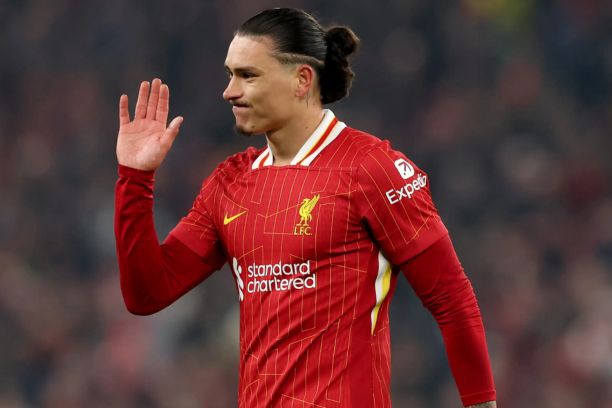
Image Credit: Goal
Núñez joined Liverpool in 2022 for an initial £64 million fee (up to £85 million with add-ons). Despite flashes of promise, he fell short of expectations for a striker valued so highly.
Darwin Núñez is highly likely to leave Liverpool this summer. Liverpool are holding firm, seeking €70 million (£60 million), while Napoli’s latest bid is around €43 million (£37 million). Liverpool, meanwhile, are already eyeing replacements as they look to reinforce their frontline.
Liverpool’s willingness to sell him reflects a broader strategy, offloading underperforming high-earners to fund fresh talent and reshape the team.
8. Mykhailo Mudryk – £88.5 Million (Chelsea from Shakhtar Donetsk, 2023)

Image Credit: Goal
Mudryk was signed from Shakhtar Donetsk on January 15, 2023, in a deal worth an initial £62 million, with potential add-ons rising to £88.5 Million. This made him the most expensive Ukrainian footballer ever and marked the Prоmotion of a major talent to Stamford Bridge.
Mudryk has been provisionally suspended since December 2024 after testing positive for meldonium. Earlier in June, he was officially charged by the FA, facing a possible four-year ban. Chelsea removed his iconic No. 10 shirt, giving it to Cole Palmer instead, a strong signal the Blues are preparing for his exit.
7. Paul Pogba – £89.3 Million (Manchester United from Juventus, 2016)
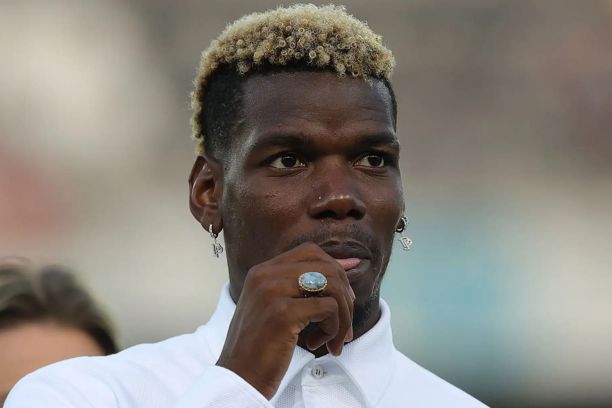
Image Credit: Goal
Paul Pogba’s return to Manchester United in 2016 was celebrated as a homecoming for a prodigal son. Letting him go to Juventus for peanuts was seen as United’s original sin, and they paid £89 million to atone.
At the time, it was a world-record fee. Pogba arrived with swagger, creative brilliance, and commercial appeal.
But Pogba’s six-year second act was a study in unfulfilled promise. Injuries, inconsistency, and tactical mismatches damaged the period when United move between short-term managers and conflicting philosophies. His legacy gives a different feeling, an era-defining premier league transfer that never quite defined an era.
6. Romelu Lukaku – £97.5 million (Chelsea from Inter, 2021)
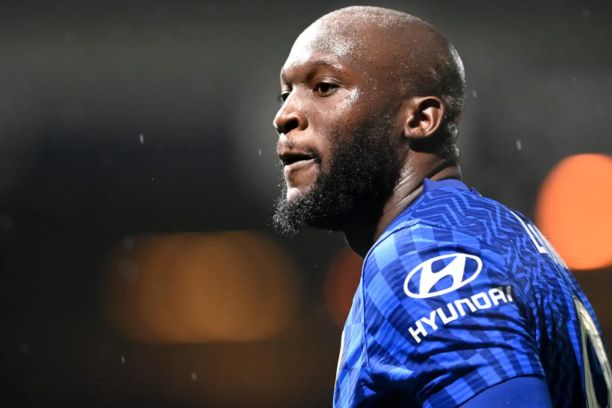
Image Credit: Goal
When Chelsea re-signed Romelu Lukaku in 2021 for £97.5 million, they wanted the final piece of their Champions League-winning puzzle. Lukaku had bullied Serie A defences for Inter, scoring goals with muscular authority and surprising action.
Chelsea hoped for a Didier Drogba on Lukaku. Instead, they got drama and tactical incompatibility, leading to Lukaku loan exit to Inter less than a year later. It remains a warning about buying reputation over integration.
People Also Read: 21 Most Decorated Football Players in History ranked by Trophies Won
5. Jack Grealish – £100 million (Manchester City from Aston Villa, 2021)
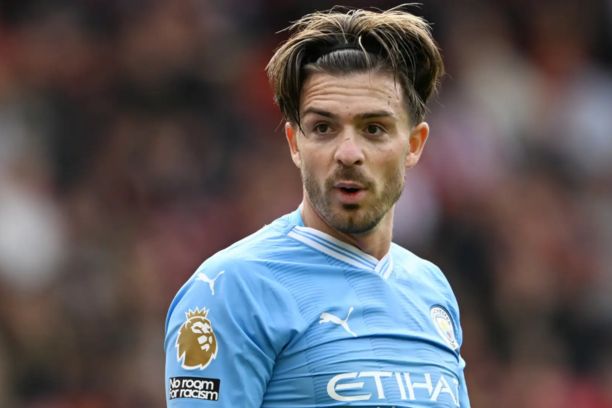
Image Credit: Goal
Manchester City paid the release clause without negotiation, making Grealish the first £100 million in the premier league transfers. He was a marketing dream, flamboyant, charismatic, local and a tactical chess piece for Pep Guardiola’s positional play.
Grealish’s adaptation was slow but steady, as he learned to swap individualistic dribbles for Guardiola’s disciplined system. The fee became an object of fascination, with every assist or misstep weighed against the nine-digit fee expectations.
4. Declan Rice – £105 million (Arsenal from West Ham, 2023)
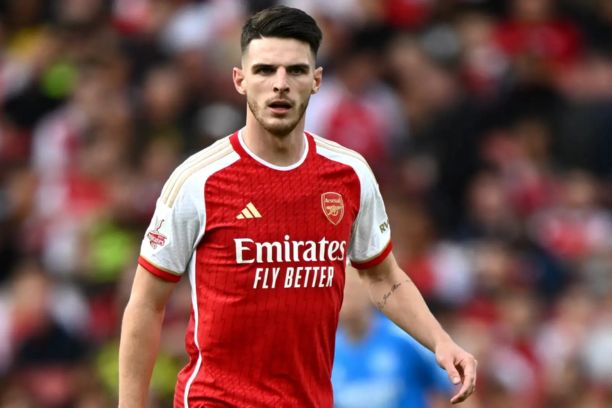
Image Credit: Goal
Declan Rice’s switch from West Ham United to Arsenal was not just about covering gaps in Mikel Arteta’s midfield. It was an intentional declaration. At £105 million, Rice became Arsenal’s record signing, one of the most expensive Premier League transfers of all time, and a cornerstone for their title aspirations.
Rice arrived with the credentials of a born leader, West Ham’s captain, a European trophy winner, and England’s midfield star. Arsenal enjoyed his blend of positional discipline, stamina, and mature decision-making.
3. Enzo Fernández – £106.8 million (Chelsea from Benfica, 2023)
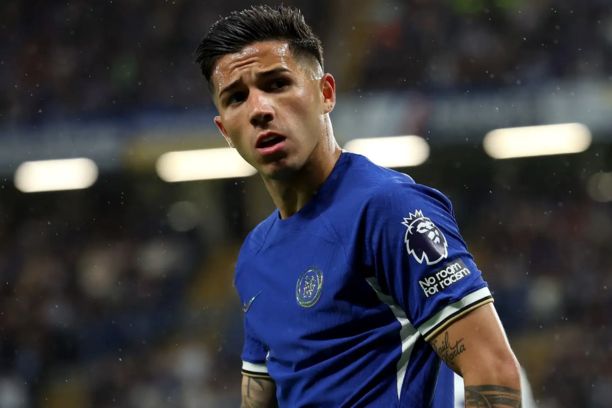
Image Credit: Goal
Signed for £106.8 million just six months after joining Benfica for €10 million, Fernández’s price tag reflected both Benfica’s negotiating prowess and the inflationary effect of a World Cup win.
Argentina’s young midfield general played well in Qatar, and Chelsea came for him in January 2023 despite Financial Fair Play scrutiny. His passing range, vision, and metronomic style is much needed for a club in transition.
Critics viewed the fee as evidence of reckless spending. Chelsea countered that they were buying not just ability but the temperament of a World Cup-winning creator.
2. Moisés Caicedo – £115 million (Chelsea from Brighton, 2023)
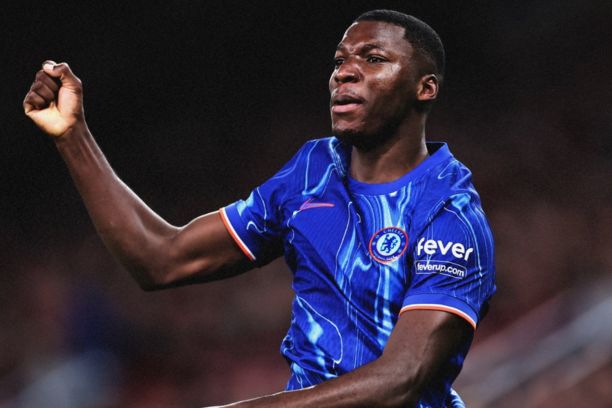
Image Credit: Goal
Moisés Caicedo’s journey from Ecuadorian promise to record-breaker is a sign of the Premier League football’s big appetite for talents. In the summer of 2023, Chelsea defeated Liverpool to land Brighton’s midfield general for £115 million, a British record at the time.
Caicedo arrived as the solution to Chelsea’s chaotic midfield, combining skill and intelligence, an engine capable of screening a defence while launching attacks with precision.
Critics questioned the sustainability of such deals. Admirers saw Chelsea’s new American regime taking an NFL-style approach to team-building. In any case, Caicedo’s fee symbolises a turning point in the Premier League transfers race.
1. Florian Wirtz – £116 million (Liverpool from Bayer Leverkusen, 2025)
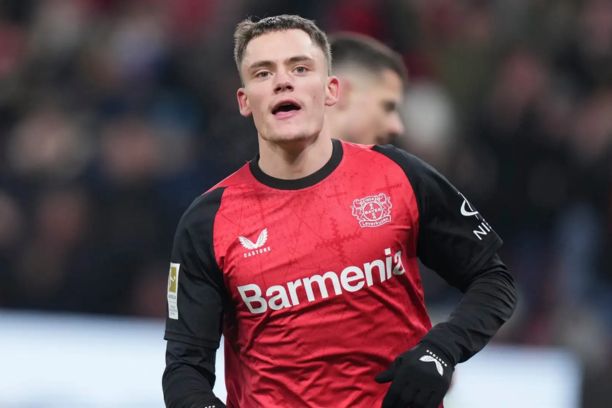
Image Credit: Goal
Wirtz has signed a five-year contract with Liverpool, tying him to the club till 2030. He is expected to join the team ahead of the 2025–26 season, potentially debuting in July friendlies and the season-opener in August. Jürgen Klopp, now retired from his Liverpool role, described the move as “vanvittig” (insane), acknowledging both the fee’s magnitude and Wirtz’s extraordinary talent
Florian Wirtz’s transfer isn’t just a headline-grabber, it signifies an economic shift in football. By breaking the premier league transfers record by a significant margin, Liverpool stake their claim in the evolving landscape, underlining the Premier League football’s dominance in global talent acquisition.
The Impact of High Premier League Transfers fees
The Premier League is not just a football competition. It’s a financial organization, a cultural export, and a performance that feeds on performance. You can see this in its record-breaking transfer fees, deals that make headlines, shape club strategies, and influence through global markets.
But what is the true impact of these eye-watering sums? Record Premier League transfers don’t just buy talent. They change expectations, reshape the balance of power, and often give unintended consequences.
Here are some ways the record-breaking Premier League transfers transform the league on the pitch, in the boardroom, and beyond.
- Raising the Competitive Bar
Record Premier League transfers are intentional statements. When Chelsea spent £115 million on Moisés Caicedo, or when Liverpool reportedly committed over £100 million to Florian Wirtz, they weren’t just filling tactical holes. They were sending a message: We want to win. Now. These deals force rivals to react.
The result? A relentless cycle of competition that makes the league the most watched and most expensive in the world.
- Inflation Across the Market
Record Premier League transfers don’t just affect the buying club. They transform the entire market. When a player is sold for £100 million, selling clubs everywhere suddenly see pound signs. A midfielder who might have gone for £40 million becomes a £60 million player. Young talents see their agents demand equality with the biggest deals.
Brighton’s sale of Caicedo didn’t just get them rich. It validated their model of buying cheap and selling huge. Now other clubs aim to replicate that, while buyers have to pay high prices for everyone from wonderkids to mid-table performers.
- Impact on Global Talent
Record-breaking premier league transfers don’t just benefit Premier League clubs. They reshape entire talent networks. When Chelsea or Liverpool pay over £100 million, the selling club reinvests in scouting, youth development, and facilities. Benfica, Porto, Ajax, and Borussia Dortmund have made entire business models out of feeding this ecosystem.
Bayer Leverkusen’s gain from Wirtz is expected to fund further investment in their famed youth academy. Brighton have reinvested the Caicedo money in multiple signings and infrastructure. This dynamic makes the Premier League the apex predator of global football. A league that can outbid rivals, pulling the best talent from every corner of the globe.
- Superstar Branding and Commercial Value
Record Premier League transfers are more than tactics. They’re about marketing. When a club signs a £100 million player, they’re not just buying goals or assists. They’re buying attention, shirt sales, social media engagement, and global reach.
Jack Grealish’s £100 million fee wasn’t just about his on-field contributions. It was about having a marketable English star with iconic hair and charisma that sells shirts from Manchester to Jakarta.
Clubs know that superstar branding can partly offset massive fees. Sponsorship deals, kit sales, and global tours all become more lucrative when you have big names in the team.
- Shifting the Balance of Power
Record Premier League transfers don’t just affect individual clubs. They shift the league’s internal hierarchy. Arsenal’s move for Rice was about bridging the gap to Manchester City. Manchester United’s fees on Pogba, Antony, and Maguire were attempts to get back relevance after the Ferguson era. Chelsea’s many record of deals under Todd Boehly was about forcing their way back into the elite.
These moves often fail, but the intention is clear. Record deals are power plays in a league where the top four spots mean Champions League riches and global prestige.
- Financial Fair Play and the Creative Accounting Arms Race
Record Premier League transfers also bring about new financial strategies. Clubs can’t just throw money around unchecked.
Chelsea’s approach of gradually paying off transfer fees over ultra-long contracts was a direct response to FFP(Financial Fair Play) pressures. Enzo Fernández’s and Caicedo’s £100 million+ fees were spread over 8-year deals to lower the annual hit on the balance sheet.
Record premier league transfers fees create a cat-and-mouse game between clubs and regulators, pushing the boundaries of football finance and revealing the tension between competition and sustainability.
The Ever-Rising Cost of Talent in the Premier League
The Premier League stands as the wealthiest, most-watched football league on Earth. Week after week, its stadiums vibrate with roaring crowds. Global TV audiences number in the hundreds of millions. Sponsorship deals command large sums.
But beneath the performance lies a hard economic truth: the cost of talent is moving relentlessly upward. From modest beginnings in the early 1990s to today’s jaw-dropping nine-figure deals, the price to secure top-tier players has become a sign of both the league’s power and its vulnerability.
Wrapping Up
The ever-rising cost of talent in Premier League transfers is both a reflection and a driver of football’s evolution. It embodies ambition, market power, and the sport’s relentless globalisation.
As long as money keeps flowing, the market will keep delivering new records. The next £150 million, £200 million, or even £300 million deal isn’t just possible, it’s inevitable. Because in the Premier League, performance is not just the product. It’s the business model.
People Also Asked:
Who spent the most money in the Premier League?
Chelsea hold the record for the highest cumulative transfer spending in Premier League history. Under Roman Abramovich (2003–2022) they were already notorious big spenders, but under new owner Todd Boehly’s consortium (from 2022 onwards), their spending reached unprecedented levels.
Who is the richest transfer in football history?
The most expensive transfer ever completed in football history is Neymar – €222 million (£200 million) from Barcelona to Paris Saint-Germain (PSG) in the Year 2017.
Who has the most debt in the Premier League?
Tottenham is the most heavily in debt. The club owes more than £1bn (US$1.4bn). This record figure is largely due to the construction of the new stadium, financed through loans and bonds .Their debt now stands as the highest of any club in Europe.
Which football team makes the most money in the Premier League?
The club that leads in revenue generation within the Premier League is Manchester City. Manchester City reported €838 million in total revenue, making them the highest-earning Premier League team. This revenue figure places them second globally, only behind Real Madrid.
Who gets paid the most in the Premier League?
Erling Haaland with £525,000 per week / ~£27.3 million per year.
Haaland agreed to a nine‑and‑a‑half-year extension in January 2025, locking him in at the Etihad until 2034. His base pay is £525,000/week, with add-ons that could raise his earnings to £875,000/week.
Who is the highest paid coach in the Premier League?
Guardiola leads the Premier League salary rankings with a £20 million annual wage at Manchester City, making him by far the highest-paid manager in English football. That’s approximately £385,000 per week, the first of its kind in the league.
RELATED ARTICLES:
Football World Cup Winners List from Inception till Date




